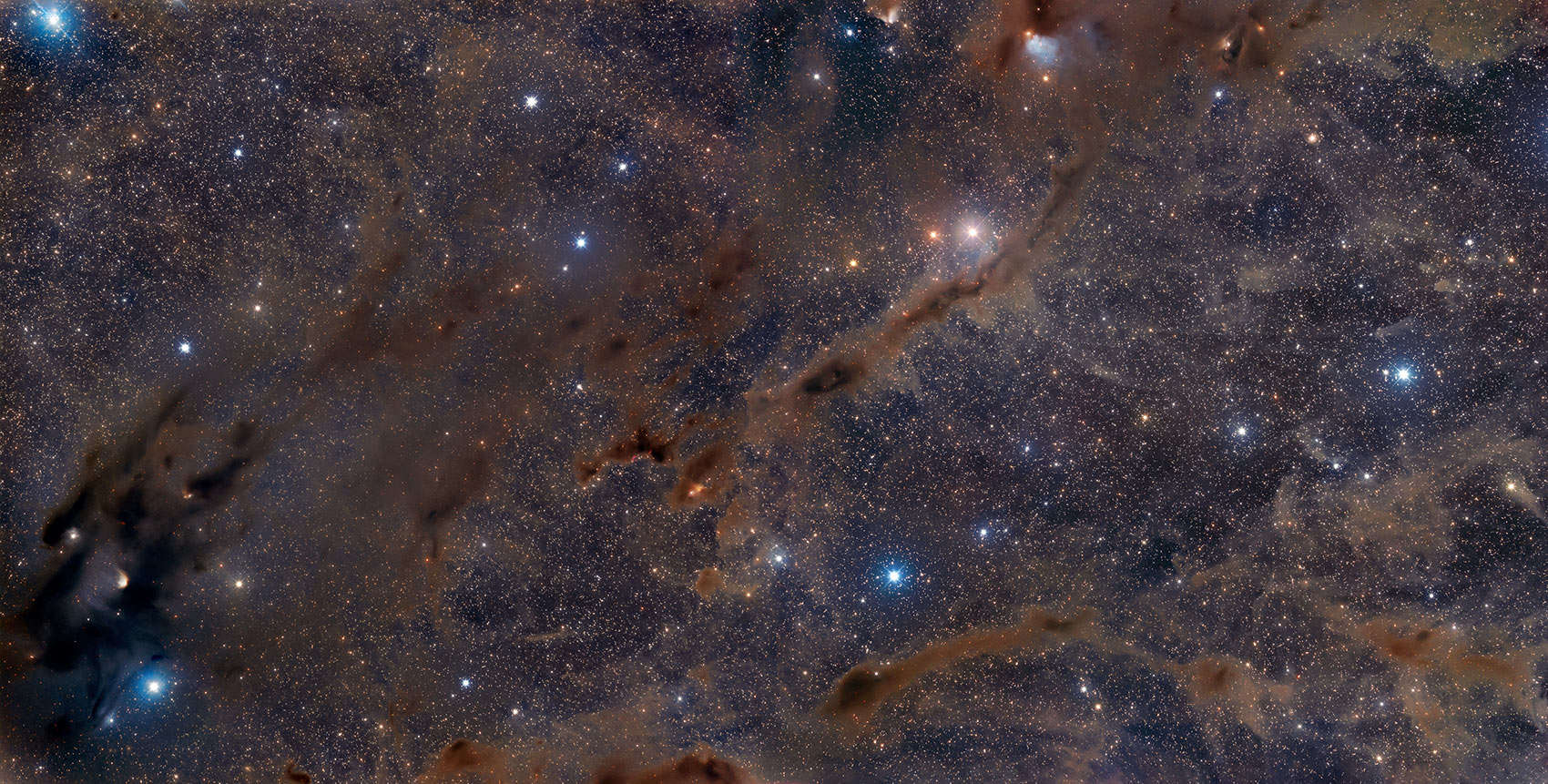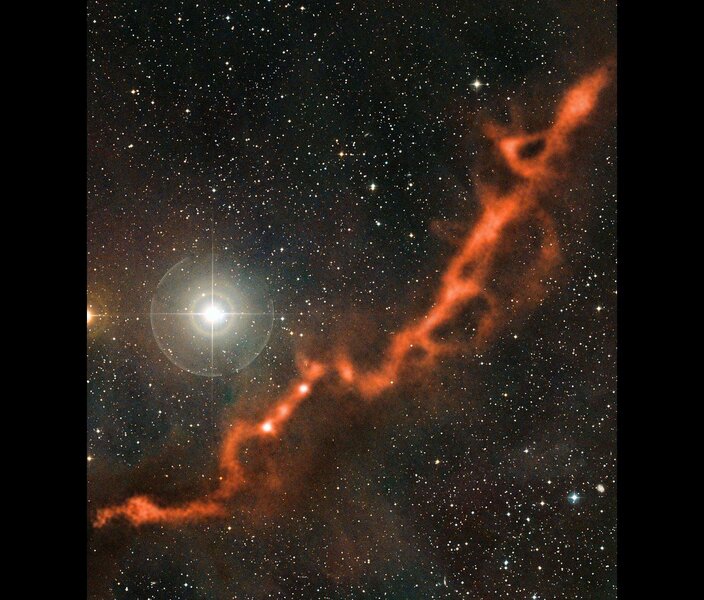Create a free profile to get unlimited access to exclusive videos, sweepstakes, and more!
The sky is filled with rivers of darkness

Your eyes lie to you.
When you go outside on a crisp, clear night and look at the stars, it looks like they rule the sky, the only denizens of the black.
Oh, certainly, if you happen to see the Milky Way stretched out above you as well it looks fuzzy, like a stream of milk that gives our galaxy its name (and even gives us the very word galaxy). But that’s an illusion of sorts, the combined light of billions of individual stars too dim to see on their own. Even that just affirms the stellar predominance.
But while your eyes whisper lies, the sky tells the truth: There is more in the heavens above Earth than you have dreamt of. The sky is filled with dust.
When astronomers talk dust, they mean tiny grains of material floating between the stars. These wee bits might be silicaceous (rocky), or they might be countless long-chain carbon molecules that are essentially soot. Both are made when stars swell up into red giants or explode as supernovae, and this material is everywhere in space.
Everywhere. Behold, my proof:
Oh my. This spectacular image (and yes, you want to click that link to get the much larger version of this shot) was taken by my friend and astronomer Adam Block using a small (18-cm.) telescope on Mt. Lemmon, Arizona. It’s a mosaic of two panels and consists of a staggering 42 hours total of observations.
It shows a part of the enormous Taurus Molecular Cloud, the closest star-forming region to the Sun at a mere 450 or so light years away. It’s so big and close that it sprawls across two constellations, Taurus and Auriga. And, as you can see, it’s littered with dust, long swaths of opaque material stretching between the stars.
But even that is not the whole truth. It’s also filled with cold gas, mostly molecular hydrogen but also lots of other ingredients, including things like methanol (yes, seriously) and what we call pre-biotic molecules — organic molecules that make up the more complex chemistry necessary for life as we know it.
There’s another thing about this image that your eyes are lying about: That material looks three-dimensional, doesn’t it? There is a clear depth to this image, as if the clouds are floating in front of the stars. I say that’s a lie because there is no actual depth here; this material is 4 quadrillion kilometers from you, and any three-dimensional component is flattened out at that scale.
…except there is a clue to depth there, isn’t there? Most of the stars are clearly behind the dust, much farther away. That is in fact true, is of course why our eyes give us the sense of layering in the image.
There is one star I want to point out: The bright one located a third of the way from the right and just above center. That’s Phi Tauri, a star bright enough to be seen by the naked eye. It’s about 300 light years away, putting it much in the foreground here. That’s a bit hard to tell here, but we have ways of measuring stellar distances.
Interestingly, it’s what we call a K0III star, an orange giant, very similar to the very bright star Arcturus (the fourth brightest in the entire sky, visible high to the south after sunset in summer months for northern hemisphere observers). This means it’s dying, a star that was once like the Sun but has run out of fuel in its core. Ironic, a dying star seen peeking over the shoulder of a place where stars are born.
I bring this up because of a lovely shot of this region by the APEX telescope, which sees light with millimeter wavelengths, far outside what our eyes can see. The cold gas and dust glows at these wavelengths, so the view is quite different:
That red river flowing across the image is part of the molecular cloud that’s black in visible light, but quite bright at longer wavelengths. The APEX image is superposed on a visible light one, and the very bright star there is again Phi Tauri (if you match it up to the photo above you can trace the same structure, except it's dark there). This is another way our eyes deceive us: They only see a very narrow slice of the electromagnetic spectrum, fooling us into thinking we see the world and the Universe as it is. Astronomers know better.
Remember that when you next gaze upon the night sky, or, really, whenever you see anything. There are whole worlds beneath and above our world, on scales minuscule and cosmic. We perceive so little of them, yet we are part of them along the scale of the Universe. This is one of the more profound lessons of astronomy, and one I ponder quite often.
















